By KEVIN STORY
Many urban fire departments have borne tools of necessity. The Fire Department of New York (FDNY) is the birthplace of the halligan, the New York roof hook, and many other forcible entry tools. The Boston rake, the Providence hook, the San Francisco hook, and a host of other tools are named after their places of origin. These tools’ common thread is that they have been crafted by firefighters to accomplish a function.
Requesting a “two-man” does not refer to a crew but a homegrown tool that has been a shining star for the Houston (TX) Fire Department (HFD) for many years. Although some two-mans are simply painted, others are chromed and displayed outside the apparatus (photo 1). The specific purpose of this tool is to break through and pull shiplap ceilings-the most basic type of ceiling construction. Shiplap ceilings are comprised of one-inch-thick by two- to 10-inch-wide pine boards nailed to a ceiling joist. In some installations or in newer renovations, it may not be uncommon to find them attached to furring strips over another ceiling.
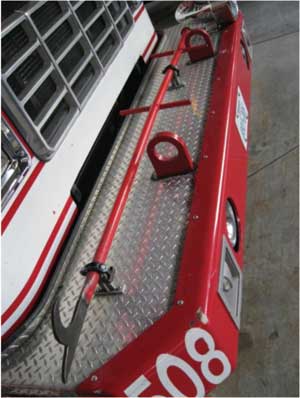 |
| (1) Photos by author. |
One of the earliest known two-man pike poles was built out of wood and is on display at the Houston Fire Museum (photos 2 and 3). This pike pole was originally on the horse-drawn 1912 American Automatic water tower. The unit was motorized in 1923 and remained in service until 1965. One of the most famous pike poles belongs to HFD Engine 8; it weighs 22 pounds and has been in service for more than 20 years (photos 4 and 5).
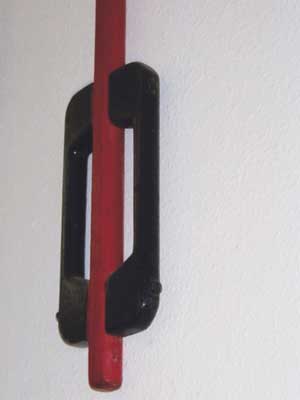 |
| (2) |
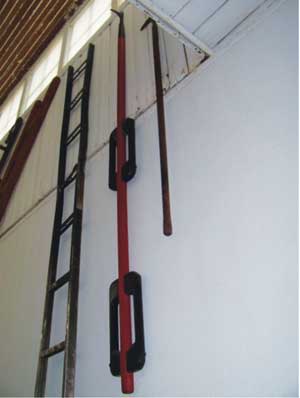 |
| (3) |
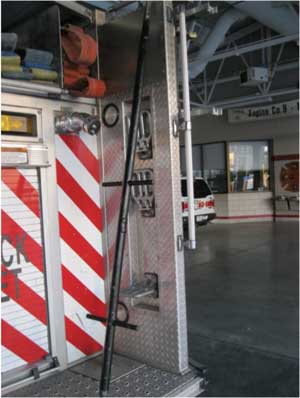 |
| (4) |
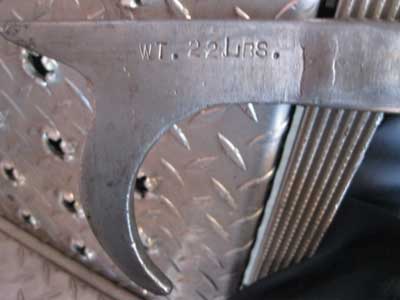 |
| (5) |
Shiplap ceilings and walls common in the South will normally defeat a fiberglass pike pole and the firefighter attempting to pull the one-inch pine boards; the flex of the fiberglass or wooden pike pole will lose its impact. The amount of force needed to pull the boards loose will cause your hands to simply slide down the pole. Shiplap is normally pulled in the center of the room to allow two members to operate. Although it is highly recommended that you begin by pulling the ceiling from the doorway or hallway of a room, when pulling shiplap you only need to get the width of the board being pulled. This is different from pulling gypsum board, where pulling in the center of the roof could result in most of the ceiling coming down on a crew. Also, depending on the age of the boards and from which part of the log they were sawn, some of these boards can be like concrete. The closer the board is sawn to the heart of the log, the harder it will be.
No article referring to shiplap would be complete without referencing bullpine. Bullpine is not a term used by firefighters who have been wacked in the head by shiplap for too many years. Even in 100-year-old shiplap, a good, hot “burner” will draw the pine resin out of the wood, which adds to the fire load. The shiny, hardened material visible on the walls and ceilings after a fire is the mark of a “good” fire.
Although a firefighter is fairly safe from being hit by the average ceiling when pulling it, this is not true when the ceiling is made of shiplap. Boards are commonly eight to 10 feet long; when a full length comes off a ceiling, everyone in the room can be in the line of fire. The force is equally distributed across the length of the board, so the end of the board can hit just as hard, if not harder, than its center because of the spring effect. Unlike gypsum board, you cannot mechanically or physically pull shiplap out a long distance in front of you. Even if you try, the effort put into the pull will pull you back under it. The length of a two-man pike pole must be kept in the six-foot range, or it will become quite cumbersome.
Using this pike pole is an art form. Optimally, its use requires two firefighters of equal height. If one firefighter’s reach is shorter than the other’s, the point will be pulled left or right of the desired point of impact during the upward swing.
HFD’s firefighting glove design was created in part because of the use of two-man pike poles. Often, when using a two-man pike pole, the other firefighter’s coat sleeve would drag your sleeve back, causing a gap between the sleeve and glove. When the members reached up to pull, wrist burns would result. Initially, this glove was exclusive to the HFD, but it has now become available to other departments.
Just like any forcible entry operation, searching for the weak link in the ceiling helps considerably. Usually, crews start working at the light fixture (where there is already a hole) or the hole through which the fire has already burned. If you’re going to start in this spot, make sure to shut down the electrical power so arcing doesn’t occur when the hook penetrates the ceiling area around the fixture. Remember, if the fixture is still in place or hanging precariously, use full eye protection to protect yourself from shattering glass.
Splitting the boards the long way rather than breaking through the boards across the grain will help as well. To accomplish this, two firefighters must face the longest dimension of the room. (The builders normally ran the boards with the longest dimension to keep from cutting more boards.) Start the swing with the tip touching the floor and swing upward, driving the tip into the ceiling; ensure that no unsuspecting firefighters are in the way while the hook is swung upward from the floor. The first hit will normally split the board; the second swing will get the hook through. Once the hook is through the ceiling, turn your body to get the hook in the right direction.
Most firefighters working with shiplap will operate the pike pole alone once the hook is through the ceiling and the first board is pulled. A common mistake among new firefighters is to hook the board and try to pull it with brute strength. An easier method is to slide the hook as far as it will go. You can also reach and then jerk the hook back down into the board, gaining the weight advantage of the tool. Maintaining contact with the board ensures the hook is in contact with the intended board.
Currently, no tool manufacturer has this pike pole in its catalog. Since the poles are nearly indestructible, and as long as they are not lost off the apparatus or in a fire, a two-man pike pole will remain in service for years. Many of these poles will have a bent tip or pole and still remain in service. The firefighters who caused the bend should remember the force with which they hit a ceiling at a rafter. Depending on its severity, a bent tip is normally not a big problem. Notably, several poles came back bent after a stucco-and-wire ceiling collapsed, which affected HFD Engine 16, trapping three firefighters. Two-man pike poles proved vital; it was the only tool that would pry the flexible heavy material off the trapped members.
The tip of a two-man pike pole has many forms. Some tips are cut from flat steel, and some can come from broken fiberglass or wooden-handle pike poles. Oversized tips normally work no better than a normal-size pike pole head. In most cases, oversized heads are usually hindrances, as they do not go through as easily. Handles are generally ¾-inch solid steel.
A pike pole is comprised of a one-inch schedule 40 pipe (a schedule 80 pipe is used for heavier weight) with a length of around six feet, three inches. The first set of handles is 32 inches from the tip; the second set is 27 inches from the tip, leaving 16 inches of handle (spacing is important for balance).
The ends of the two-man pike pole vary by company and trial and error. Using a piece of round stock about three inches long and of the same diameter as the handles extends the reach of the pole even higher by adding a fifth handle to the tail end.
Gypsum board is no match for a two-man pike pole, especially when it is used with the hook pointing down toward the floor. Instead of creating a hole the size of the pike pole head, you can create an approximately eight-inch hole. When flipped around on its end, the hook will pull more gypsum board than any gypsum board hook on the market.
Many companies have had versions created with only two handles, making this an “I” tool instead of a “we” tool. Thus, the art of two firefighters working together is lost.
Author’s note: Most of the HFD’s pike poles were built by then-retired Firefighter Frank Viola. Viola entered the HFD in 1940 and served in the Navy during World War II; he retired from the HFD in 1981. Still serving the HFD, Viola went to work shortly thereafter at the shops, creating the two-man pike pole. His total service time to the city was 50 years. Viola died on May 25, 1999. He was a true craftsman who put his name on everything he built.
● KEVIN STORY is a captain in the Houston (TX) Fire Department (HFD), where he has worked for 22 years, mostly in the HFD’s District 8. He began his fire service career with the Copperas Cove (TX) Fire Department while serving in the U.S. Army.
Fire Engineering Archives

